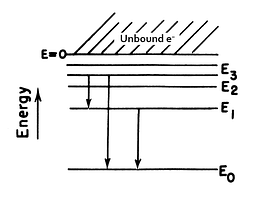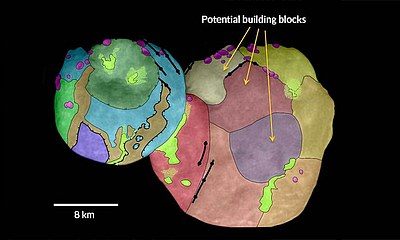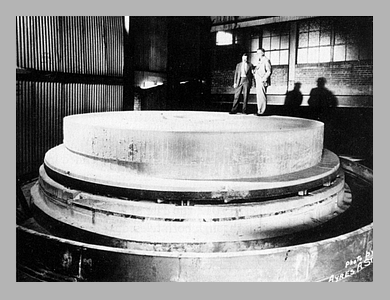
This Month in the History of Astronomy - January
- Jan 2, 1920 - George Herbig, American astronomer who
spent his career at the University of Hawaii Institute for Astronomy
and is best known for his work on stars in the early stages of
evolution and on the properties of interstellar dust. He got his
Ph.D. at the University of California/Berkeley in 1948 for "A Study
of Variable Stars in Nebulosity".
Intermediate mass pre–main sequence stars are named Herbig Ae/Be
stars due to his work -- the little "e" stands for emission, as
in emission lines in their spectra -- and Herbig–Haro objects
are bright patches of nebulosity near stars excited by a bipolar
outflow from the star being born.
Herbig was awarded the Henry Norris Russell prize of the American
Astronomical Society in 1975 and the Bruce Medal of the
Astronomical Society of the Pacific five years later, both
for lifetime contributions to the field of astronomy.
- Jan 8, 1942 - Stephen Hawking, British theoretical
astrophysicist who specialized in black holes. Exactly the
opposite of his predecessor at Cambridge, Fred Hoyle (see
June 24th), Hawking was thoroughly
orthodox in his cosmology.
- Jan 10, 1936 - Robert W. Wilson, co-discoverer with
Arno Penzias of the cosmic microwave (3°K) background;
1978 Physics Nobel Laureate.
- Jan 12, 1830 - The founding of what in 1831 would become
the Royal Astronomical Society, by John Herschel, Charles Babbage,
James South, and several others. The first "AS", the RAS has
published it's Monthly Notices continuously since 1831.
- Jan 13, 1930 - George Wallerstein, American astronomer
specializing in high resolution spectroscopy and the determination
of the chemical abundances of stars.
- Jan 14, 1881 - Francis Pease, American astronomer
who specialized in optics and instrumentation, especially large
telescopes and optical interferometers.
Pease started at the Yerkes Observatory as an assistant to George
Ritchey, who built many of the large telescopes of the time. Pease
became an astronomer and instrument maker at Mount Wilson about
the time the 60" telescope went into operation, where he helped
design the engineering on the 100" telescope. As an assistant to
ALbert Michelson, he collaborated on a stellar interferometer
fitted to the 100" which made the first direct angular diameter
measurement of a star (Betelgeuse). He later designed and built
a 50-foot interferometer and was involved in the design of the
300" telescope, which became the 200".
- Jan 19, 1747 - Johann Bode, publicizer of the Titus-Bode
law, a nearly geometric progression of the distances of the planets
from the Sun.
- Jan 19, 1851 - Jacobus Kapteyn, Dutch astronomer who
compiled data on the positions and brightnesses of 455,000 stars,
primarily in the Southern hemisphere, and transformed them into
distributions and motions to create the first modern model
of the size, structure, and dynamics of the Milky Way Galaxy.
- Jan 20, 1573 - Simon Mayr, who observed the moons
of Jupiter at nearly the same time as Galileo and gave them
the Greek names in use today (see below).
- Jan 21, 1792 - John Couch Adams, who predicted the
existence of Neptune.

- Jan 21, 1908 - Bengt Strömgren, developer of the
theory of ionization nebulae (H II regions) such as the Orion and
Trifid (M20) nebulas, in which hard ultraviolet radiation from very
hot, O-type stars, photons with ≥13.6 eV energy, ionizes the
surrounding hydrogen gas, heating it up to temperatures of several
thousand degrees Kelvin (up to ~10,000°K).
When the free electrons recombine with the hydrogen ions (bare
protons), they emit light of specific energies (wavelengths) as
they cascade down through the hydrogen atom's energy levels to the
ground state in a number of different ways, yielding the observed
spectrum rich in hydrogen emission lines. [See energy level diagram
at right.] The gas essentially fluoresces by absorbing light of one
wavelength and converting it to light of other, visible wavelengths.
The finite number of UV photons emitted by the stars means the
"Strömgren sphere" will be of finite radius, so if the gas
cloud in which it occurs is of fairly uniform density, the H II
region will look approximately spherical and Strömgren's
equations give its diameter -- or the gas density if the size
can be determined some other way. This is one of the few ways
to get gas densities in star forming regions, since O stars have
such short lifetimes that they're always found where this is an
active process.
Strömgren also developed a system of medium bandwidth
photoelectric photometry which allowed stellar spectral
classification without requiring an actual spectrum.
The Copenhagen Observatory was Strömgren's home from
the time he was born until 1931, as his father was appointed
professor of astronomy at Copenhagen University (1907) and
was the observatory's director until his retirement in 1940.
He gained much during his student years from the close
proximity with the Neils Bohr Institute, working out the
poorly known composition of stars as being ~70% hydrogen
and ~26% helium (by mass) in his 30's.
After World War II Strömgren moved to the US and became
director of the Yerkes and McDonald Observatories, staying
there for six years. In 1957 he was appointed the first
professor of theoretical astrophysics at the Institute for
Advanced Study in Princeton, where he got Albert Einstein's
office in Fuld Hall after the latter's death two years
earlier.
He received both the Gold Medal of the Royal Astronomical
Society (1962) and the Henry Norris Russell Lectureship from
the American Astronomical Society (1965).
- Jan 24, 1882 - American solar astronomer Harold Babcock,
who proposed that the sunspot cycle was a result of the Sun's
differential rotation and magnetic field (1961).
- Jan 25, 1736 - Joseph Louis Lagrange, famed French
mathematician who made important contributions to the field
of celestial mechanics.
- Jan 28, 1611 - Johannes Hevelius, who published the
Selenographia, the first detailed maps of the Moon (1647).
Discoveries and other firsts

©2002-2025, Chris Wetherill. All rights reserved. Display here does
NOT constitute or imply permission to copy, republish, or redistribute
my work in any manner for any purpose without prior written permission.

[ Back to December ||
On to February ]
[ To: History Directory ||
Main VISNS page ]






